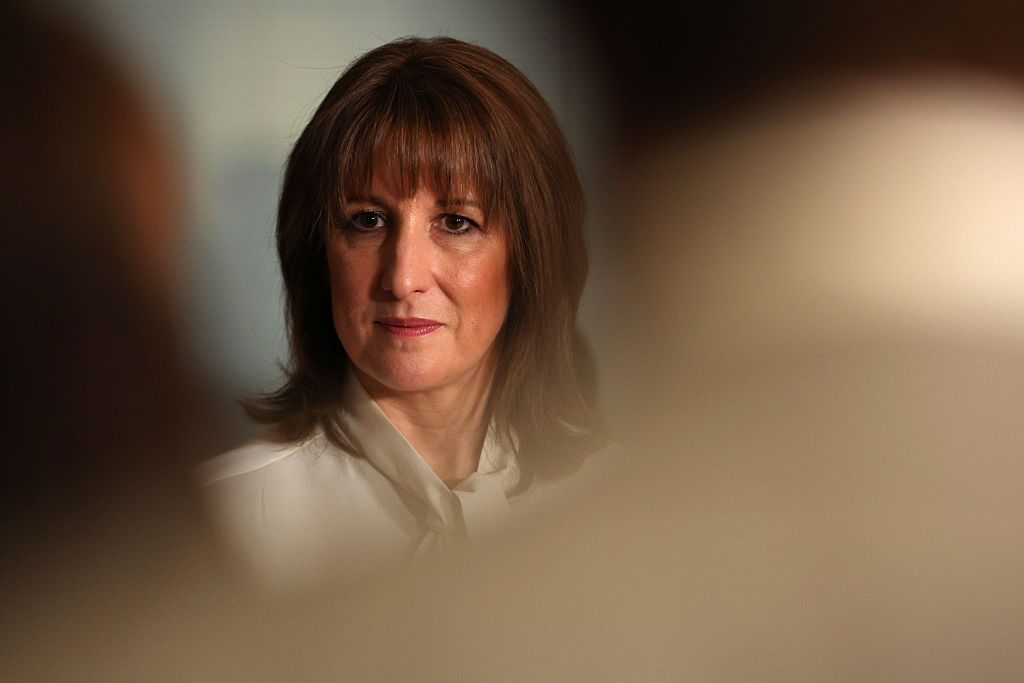HMRC slaps pensioners with record high surprise tax bills - do you owe the taxman money?
More than a million people face surprise tax bills by HMRC, including thousands of pensioners, as triple lock pushes more retirees into taxable income brackets


Thousands of pensioners have been issued with bills by HMRC as frozen income thresholds and higher pension payments push them into owing tax.
Rather than being expected to file tax returns, a Freedom of Information request by wealth manager Quilter has found the taxman has been increasingly issuing bills known as simple assessments to groups such as pensioners to collect owed tax.
While intended to streamline tax collection, Quilter said the growing use of simple assessments could catch people off guard and reflects in part the increasing number of pensioners being drawn into the tax system.
MoneyWeek
Subscribe to MoneyWeek today and get your first six magazine issues absolutely FREE

Sign up to Money Morning
Don't miss the latest investment and personal finances news, market analysis, plus money-saving tips with our free twice-daily newsletter
Don't miss the latest investment and personal finances news, market analysis, plus money-saving tips with our free twice-daily newsletter
Sharp rises in state pension payments driven by the triple lock – which ensures the state pension increases each year in line with the highest figure of either inflation, average earnings or 2.5% – is a big factor dragging more pensioners into paying tax.
The full new state pension increased by 4.1% in April – from £221.20 a week (£11,502 a year) to £230.25 (£11,973). The full basic state pension rose from £169.50 a week (£8,814 a year) to £176.45 (£9,175).
This puts the full new state pension in particular very close to the personal allowance threshold – currently £12,570 – after which tax is due. Where pensioners have other sources of income, many are now receiving simple assessments from HMRC and must pay income tax in retirement.
HMRC sent out 1.32 million simple assessments in the 2023/24 tax year, up 74% from 757,745 the year before – according to the research.
This marks the highest number on record and nearly triples the volume issued five years ago.
Jon Greer, head of retirement policy at Quilter, said: “This is yet another sign of fiscal drag in action. Millions are sleepwalking into the tax system through no fault of their own.
“The sharp rise in simple assessments reflects how frozen tax thresholds and higher state pensions are creating more tax liabilities for older people. Many of them may not even realise they owe anything until HMRC’s letter arrives.”
“Unexpected tax bills can be scary especially if you are already struggling with your finances. If you get one and don’t know what to do, the best course of action is to call HMRC to discuss your options. Do not bury your head in the sand.”
What is a simple assessment?
Simple assessments are used by HMRC to collect tax without requiring the taxpayer to complete a self-assessment return.
Instead, HMRC issues a tax bill directly when it believes the calculation is straightforward, often where it holds enough information about an individual's income.
Typically simple assessments are used for pensioners or employees who underpay tax due to changes in income that aren't fully accounted for by PAYE during the year.
There is no fixed income threshold that automatically triggers a simple assessment. However, HMRC generally issues them when:
- A person owes more than £3,000 in unpaid income tax and is not already in self-assessment
- Tax cannot be collected through PAYE, such as from the state pension (which is paid gross)
- HMRC believes it has enough information to calculate the tax due accurately
HMRC does not publish official figures on the average simple assessment bill. It is usually smaller amounts of money.
Who can expect a bill?
Simple assessments are most commonly issued to three groups of people:
- Pensioners whose total income, particularly after recent state pension increases, pushes them above the personal allowance (£12,570 for 2024/25) but who do not file tax returns
- Employees with multiple income sources, especially where one income stream isn’t fully taxed under PAYE
- Taxpayers who no longer need to complete self-assessment but still have a tax liability
Year | Number of simple assessments issued |
|---|---|
2017/18 | 486,340 |
2018/19 | 711,390 |
2019/20 | 593,637 |
2020/21 | 582,211 |
2021/22 | 675,442 |
2022/23 | 757,745 |
2023/24 | 1,320,755 |
How is pensioners’ income taxed?
The data shows a steep rise in the number of taxpayers being automatically assessed for underpaid tax, and so being sent simple assessments.
Many state pensioners also have other income in retirement which is subject to income tax collection via PAYE.
The state pension is paid without any tax deducted at source. This means those who also receive other income, such as a private pension or earnings, have their state pension taken into account via reductions to their tax code instead.
Most pensioners won’t need to complete self-assessment tax returns as a result. But errors in tax codes can occur, especially for pensioners due to state pension miscalculations. So they may get a simple assessment.
Why can errors in tax codes occur, especially for pensioners?
Pensioners are particularly vulnerable to tax code errors because the state pension is not taxed at source, so HMRC must collect the tax through other means, often by adjusting the tax code on a private pension. If this is not done correctly, an underpayment arises.
Also pensioners tend to have multiple sources of income (such as two pensions, or pension and part-time work) which can cause confusion in applying the correct tax codes.
Changes in income – like starting to draw down a private pension or moving from work to retirement – can also lead to lags in information being updated.
Then there are often delays in data sharing between DWP, pension providers, and HMRC that can mean tax codes are based on outdated information.
Finally manual adjustments by HMRC can introduce errors, particularly if taxpayers don’t spot mistakes in their tax code notices.
Frozen income tax thresholds
Another key driver in the increase in people being sent simple assessments is the continued freezing of tax thresholds until 2028. Personal tax thresholds have been frozen in cash terms since April 2021, whereas previously most were due to rise in line with CPI inflation.
When earnings rise relative to tax thresholds, more of taxpayers’ income is taxed, and more of what is taxed falls into higher tax bands. This is known as fiscal drag.
Also as incomes rise with inflation, more people are pushed over the personal allowance – the amount of income allowed before tax is due, currently £12,570 for most people. So tax is due for more people.
Frozen income tax thresholds are a kind of stealth tax that effectively increases the tax burden year-on-year without any change in headline rates.
Get the latest financial news, insights and expert analysis from our award-winning MoneyWeek team, to help you understand what really matters when it comes to your finances.
Laura Miller is an experienced financial and business journalist. Formerly on staff at the Daily Telegraph, her freelance work now appears in the money pages of all the national newspapers. She endeavours to make money issues easy to understand for everyone, and to do justice to the people who regularly trust her to tell their stories. She lives by the sea in Aberystwyth. You can find her tweeting @thatlaurawrites
-
 Christopher Harborne: Reform UK donor and crypto billionaire
Christopher Harborne: Reform UK donor and crypto billionaireChristopher Harborne came into the spotlight when it emerged he had given £9 million to Nigel Farage's Reform UK. How did he make his millions?
-
 Reeves's business rates hike will crush the British economy
Reeves's business rates hike will crush the British economyOpinion By piling more and more stealth taxes onto businesses, the government is repeating exactly the same mistake of its first Budget, says Matthew Lynn
